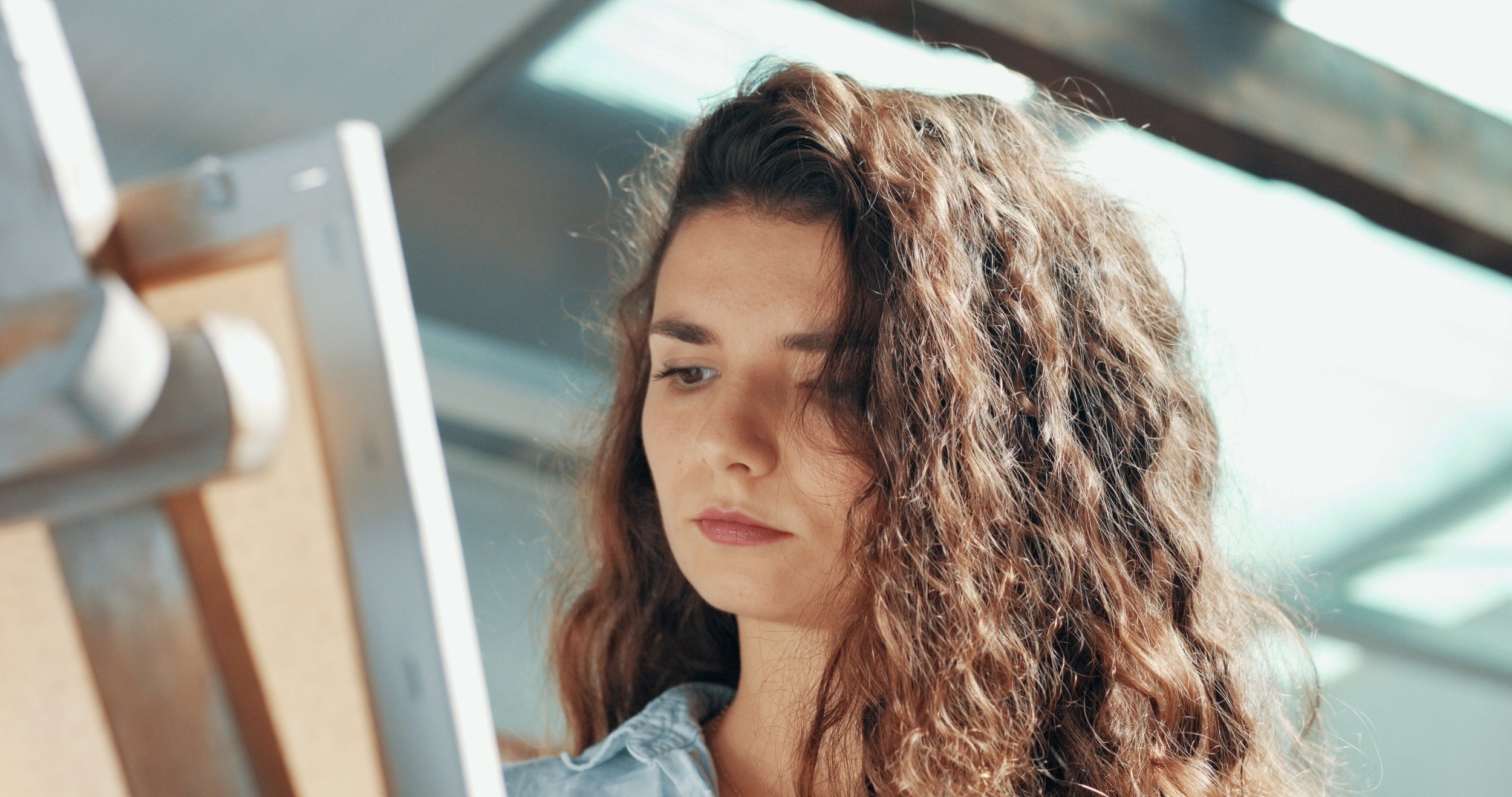We all do this sometimes: You created something amazing, but now you can’t stop fiddling with it. Before long, the special quality it had is gone. Frustrated, you grumble, “Aw, it was better before I started messing with it! Why didn’t I leave it alone?”
So… why do we mess with our art, especially when it doesn’t need fixing?
Two things.
1. It is not a waste when this happens. Every time you say, “I wonder what will happen if I…?” you’re embracing freedom (and that’s good!). Every time you say, “Aww, I liked it better 2 minutes ago,” you’ve learned something valuable to take forward with you forever. Experimentation is 1000 times faster than sitting there afraid to use your art supplies.
But it’s more than learning.
Here’s the real reason it’s hard to leave our art alone when it’s looking cool.
2. It’s because it’s beautiful. Beauty invites us to play!
Can we just celebrate this for a minute? Something YOU MADE is beckoning you to enter? How wonderful is that?
The reason it’s hard to leave it alone is that your art looks amazing, and you want to keep creating. What a good gift from God!
So don’t think of it as a mistake. You are recognizing and responding to beauty.
If you want to keep working right over the top of it, go ahead. God designed art to comfort, heal, focus, express, and bring inner peace. You don’t need to weigh the outcome. Applying art materials might be your whole goal. I say go for it!
But if you want to recognize the moment when your art reaches a beautiful point, keep reading.
Adding to a design at its peak, and trying to “fix” key elements that are the whole reason it works, will lead to one of two things:
The art will become even more powerful.
OR
You will say, “Shoot. I should have stopped five minutes ago.”
How will you ever know, unless you go beyond?
Sometimes, “going beyond” a trusty stopping point is essential, especially when you plateau. (We all plateau.) Pushing past a safe stopping point can lead to a new breakthrough. A so-called “mistake” can bring a million discoveries. If you don’t push beyond what you know, you can’t learn.
Other times, learning how and when to stop can be the discovery. You’ll have fewer incidents of accidentally covering up or taking away what what so wonderful about your art in the first place.
Here’s what that can sound like:
“Look at those two amazing highlights on this painting! I know if I keep adding more highlights, they will turn into a pattern and stop being special. So I’m going to let these highlights be the focus and not add more.”
Or: “Wow, that paint stroke I made looks so free. It feels like someone just painted it, all fresh and spontaneous. I’ll make sure not to cover it with more paint.”
For future people to marvel at my brush strokes, I need to stop and marvel at my own brush strokes without interrupting them.
Here are 10 tips on how to practice a good stopping point with your art.
-
Don’t beat yourself up for playing. Art is play. Play is indispensable to life. The Lord enjoys it when you create. Join our “Restorative Play” webinar with a free workshop on painting with the Holy Spirit.
-
Be glad for your progress. Your prior artwork is what brought you to this point.
-
When your art piece suddenly reaches a gorgeous and transcendent stage, pause. Wide-eyed play is calling, and your instinct is to keep playing. Affirm the instinct, put down your art tools, and let your eyes and your sense of wonder take over the play. Use your eyes and heart to marvel instead of adding more material to that section. Wonder at the strangeness and beauty of what you’ve made. Ask the Lord to show you what’s on his heart.
-
Shift creative activity from the artwork to something simple, temporary, and accessible. Do a dance, write a poem, celebrate, make a smoothie, draw a cartoon, smudge random colors onto cardboard or a second small canvas, worship, rest, or jot a note in your journal about how you’re feeling. Or shift to a different project; many people have 3 or 4 art pieces going simultaneously.
-
Resist the urge to “fix” or fiddle with the thing you just made. Let a few days go by. You can adjust things later if you decide it’s needed.
-
Allow the medium to do what the medium is designed to do. Put art aside while it’s morphing and changing. Remove temptation to “help” or fuss or fix it as it settles in.
-
Quit trying to turn your medium into something it’s not. A painting is not a photograph, and vice versa. Watercolor insists on crisp edges and a watery flow; embrace its watercolor-ness. The earthy grooves in clay point to a maker. If you create something representational, it’s not meant to pass for the actual thing it represents. “This is not a pipe.” Let your art be art.
-
Copy artists you admire for educational purposes. Predict what will happen if you try this or that. (Do not sell or publish your copied pieces; they are just for practice, but you can share them with our Emerge community.)
-
Celebrate artistic freedom. Use posterboard to play and experiment. Push your art past good stopping points anytime you like.
-
Create a body of work; it will teach you faster. Tell a friend to challenge you to make 8 new pieces in the next 2 months. Invite a small group of friends over for a house show, and bravely tell them what you learned.
It’s okay that you liked something better a minute ago. It means you’re making art. Way to go, practitioner of beauty! Keep creating.

Leave a Reply